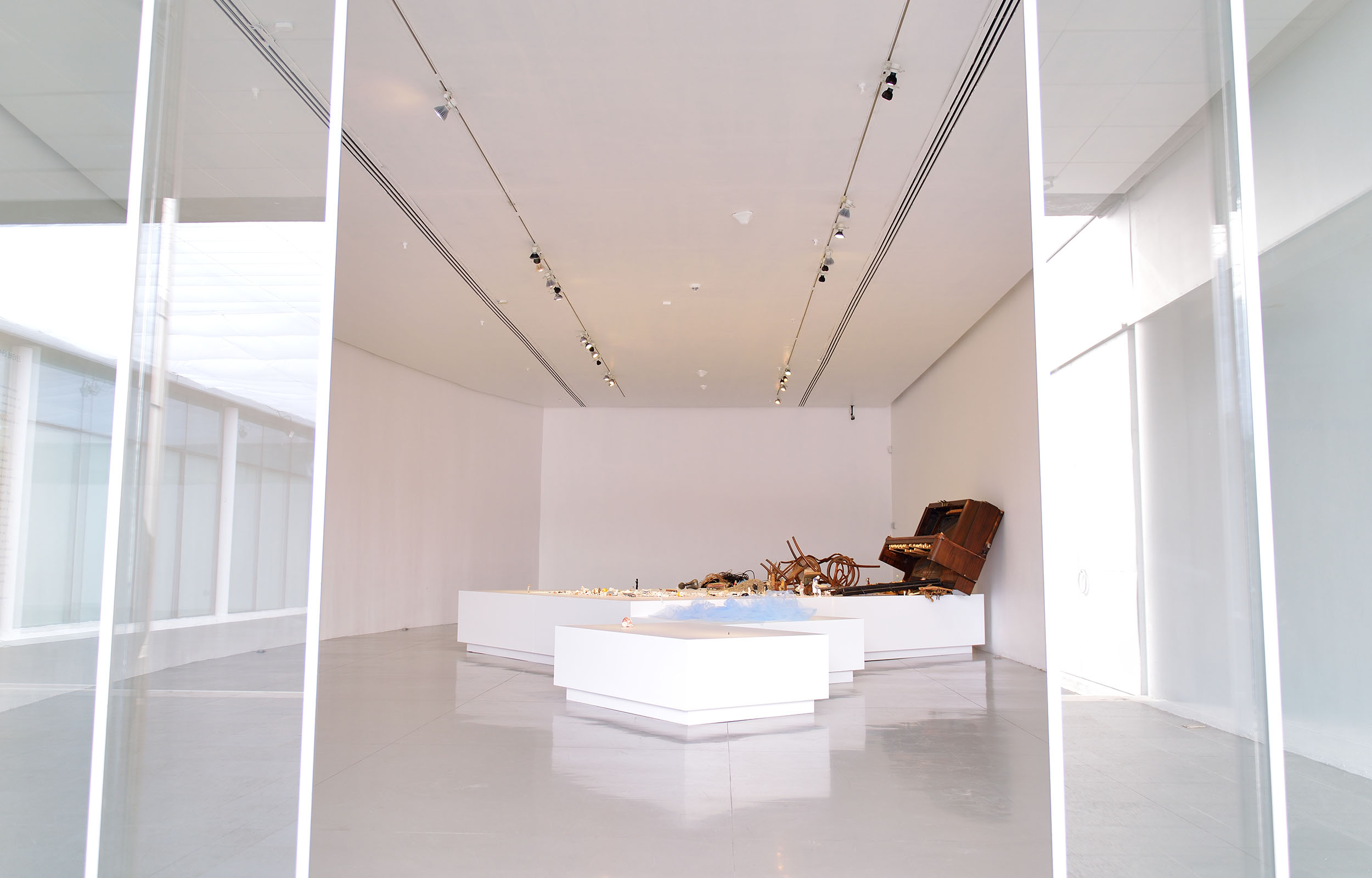
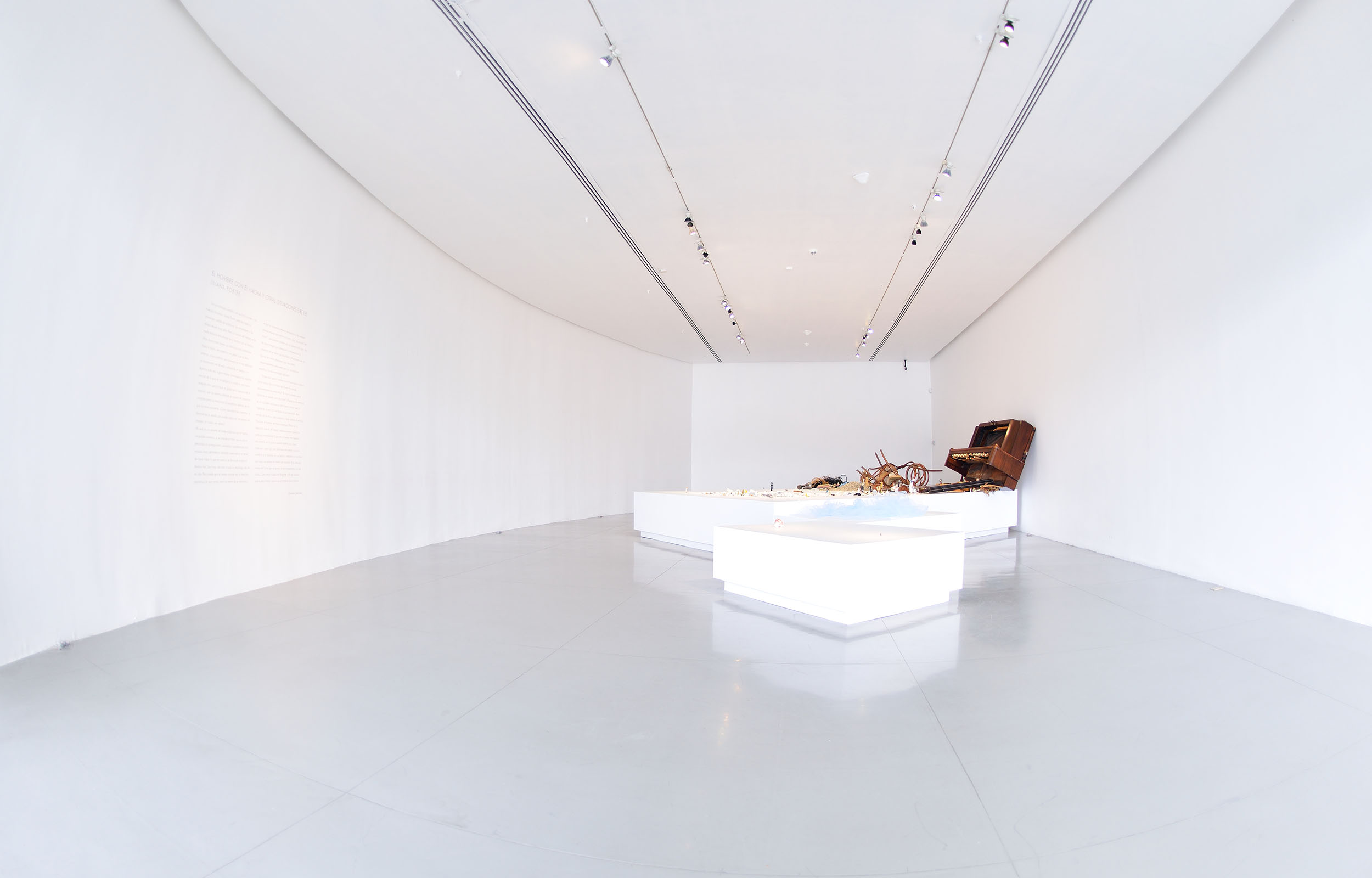
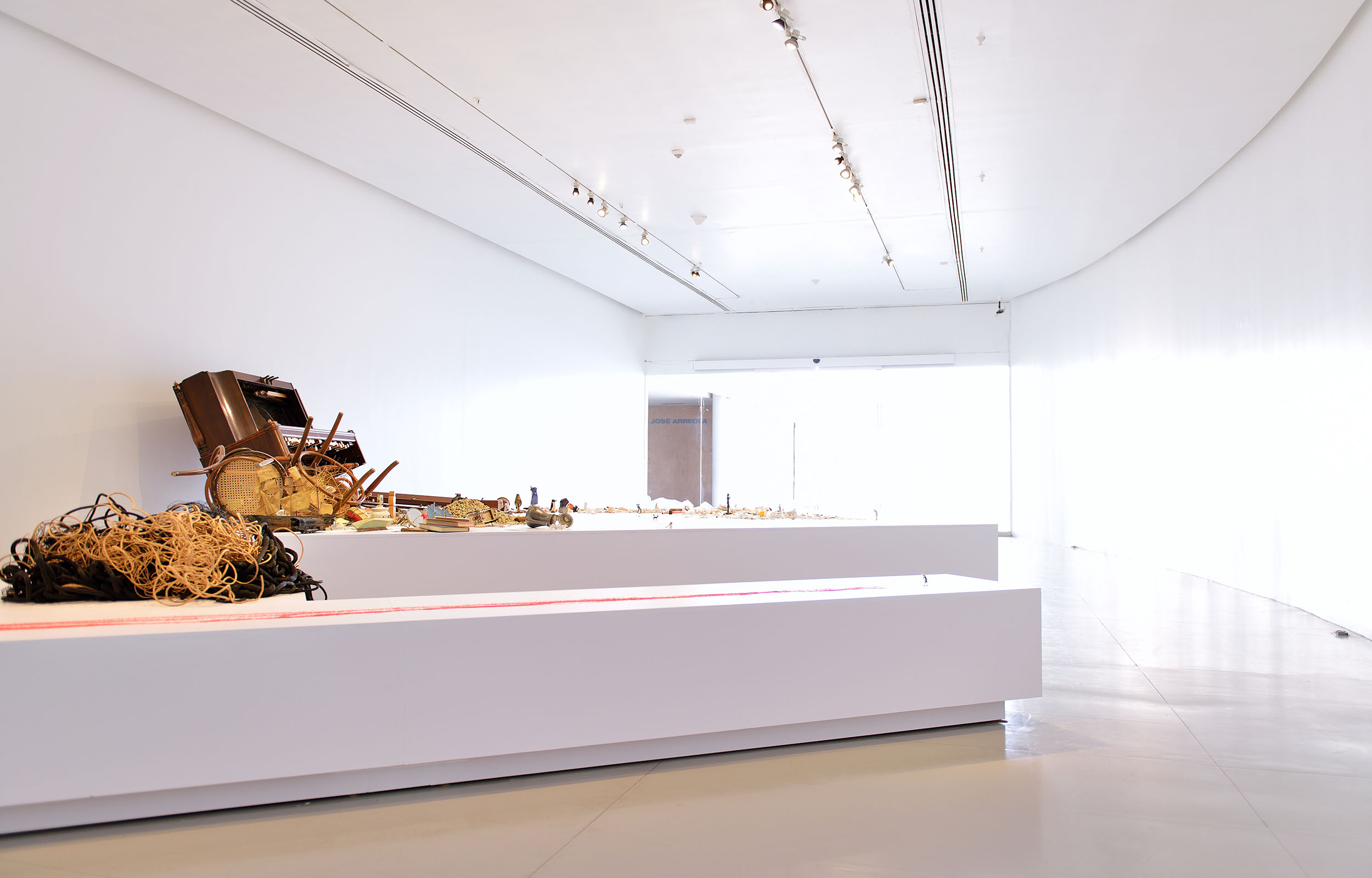

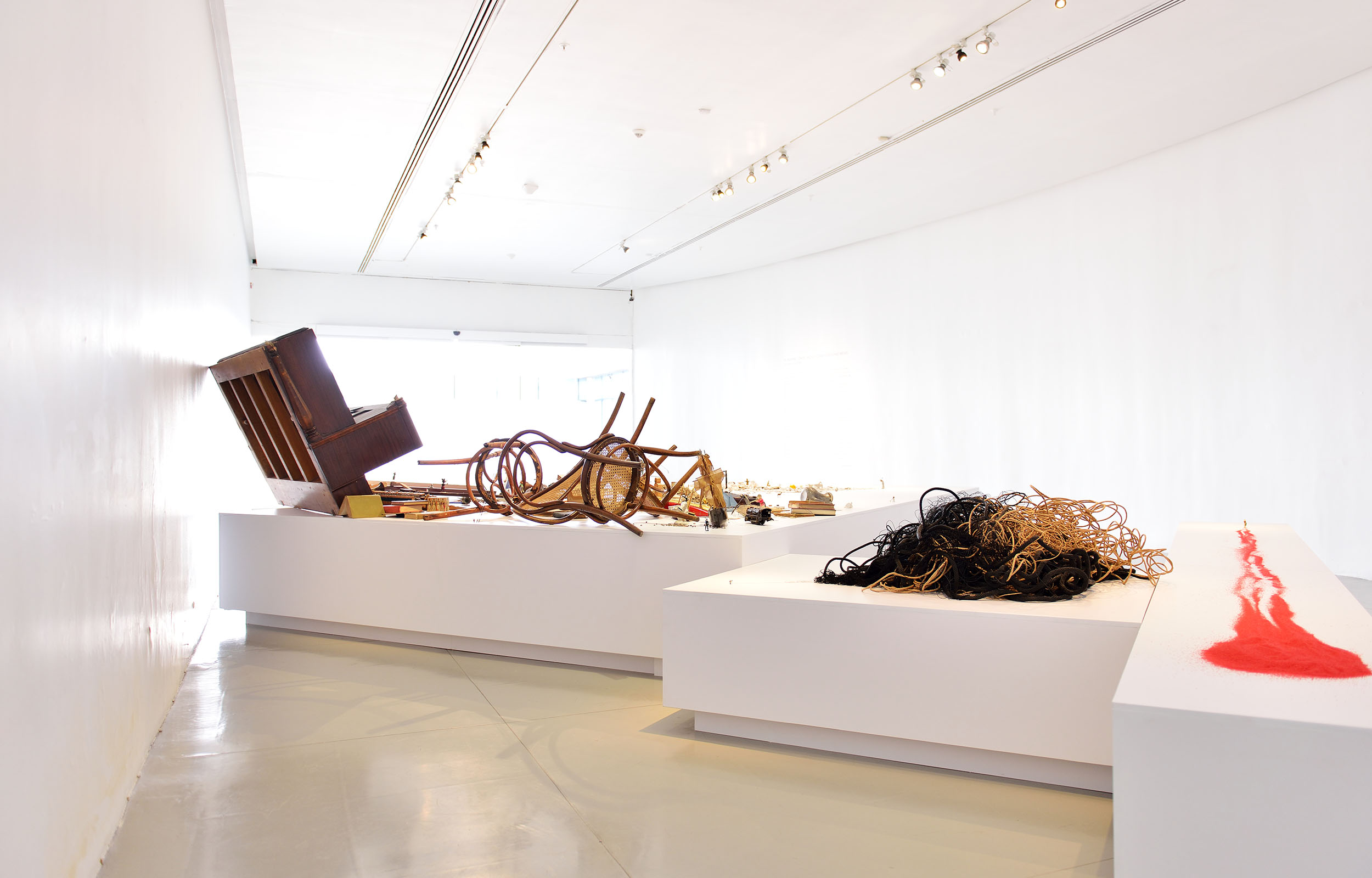
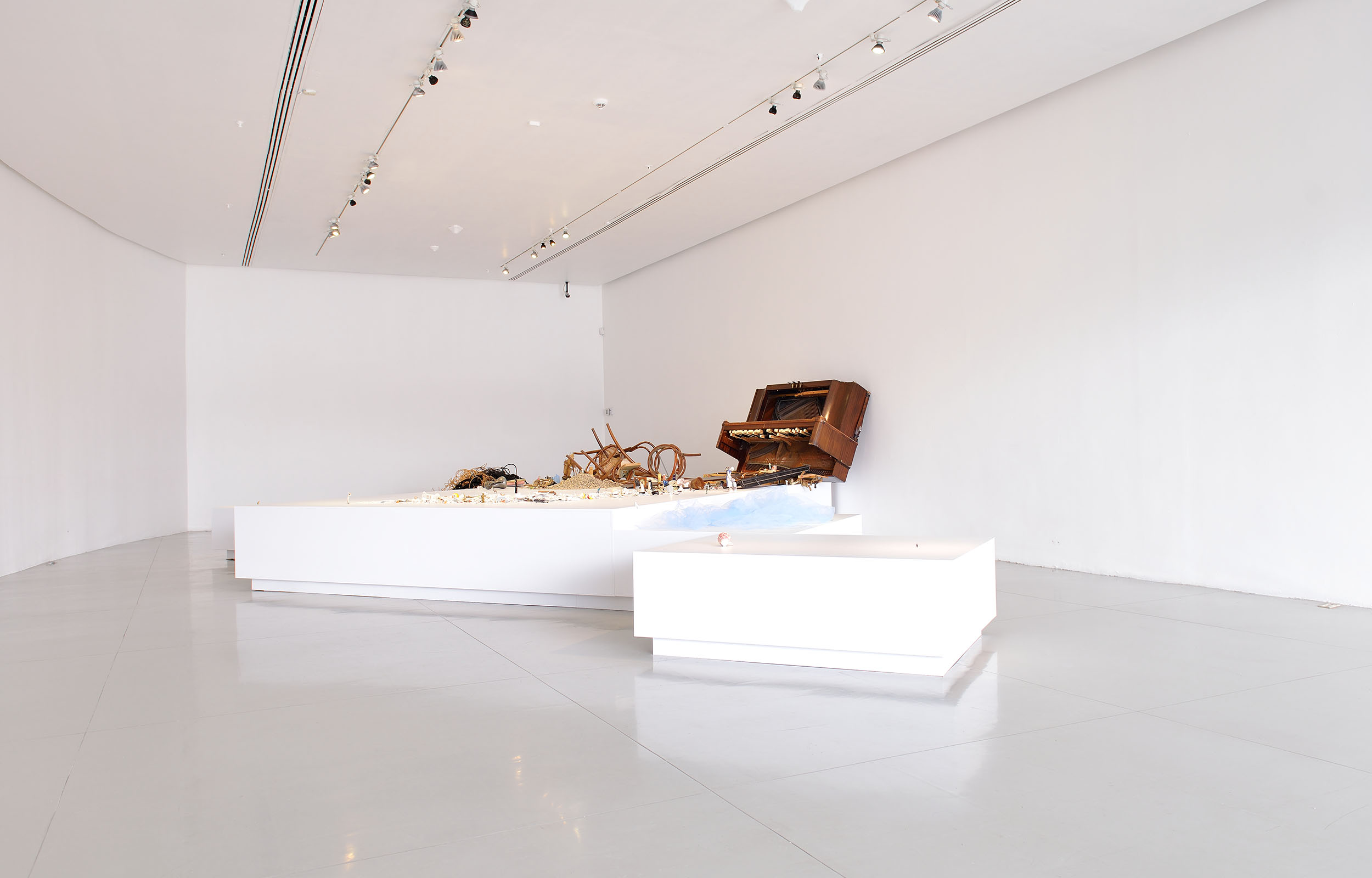
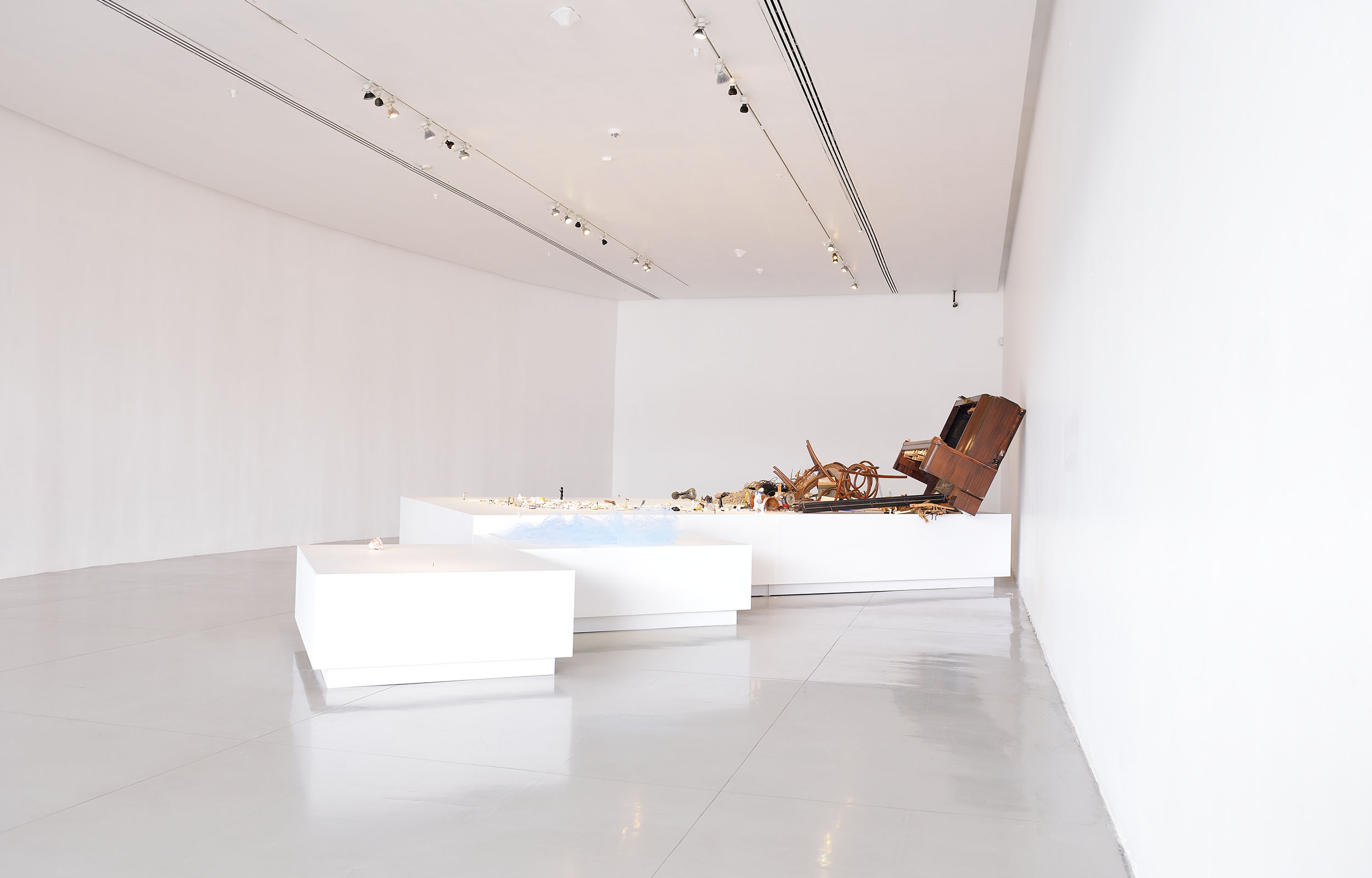
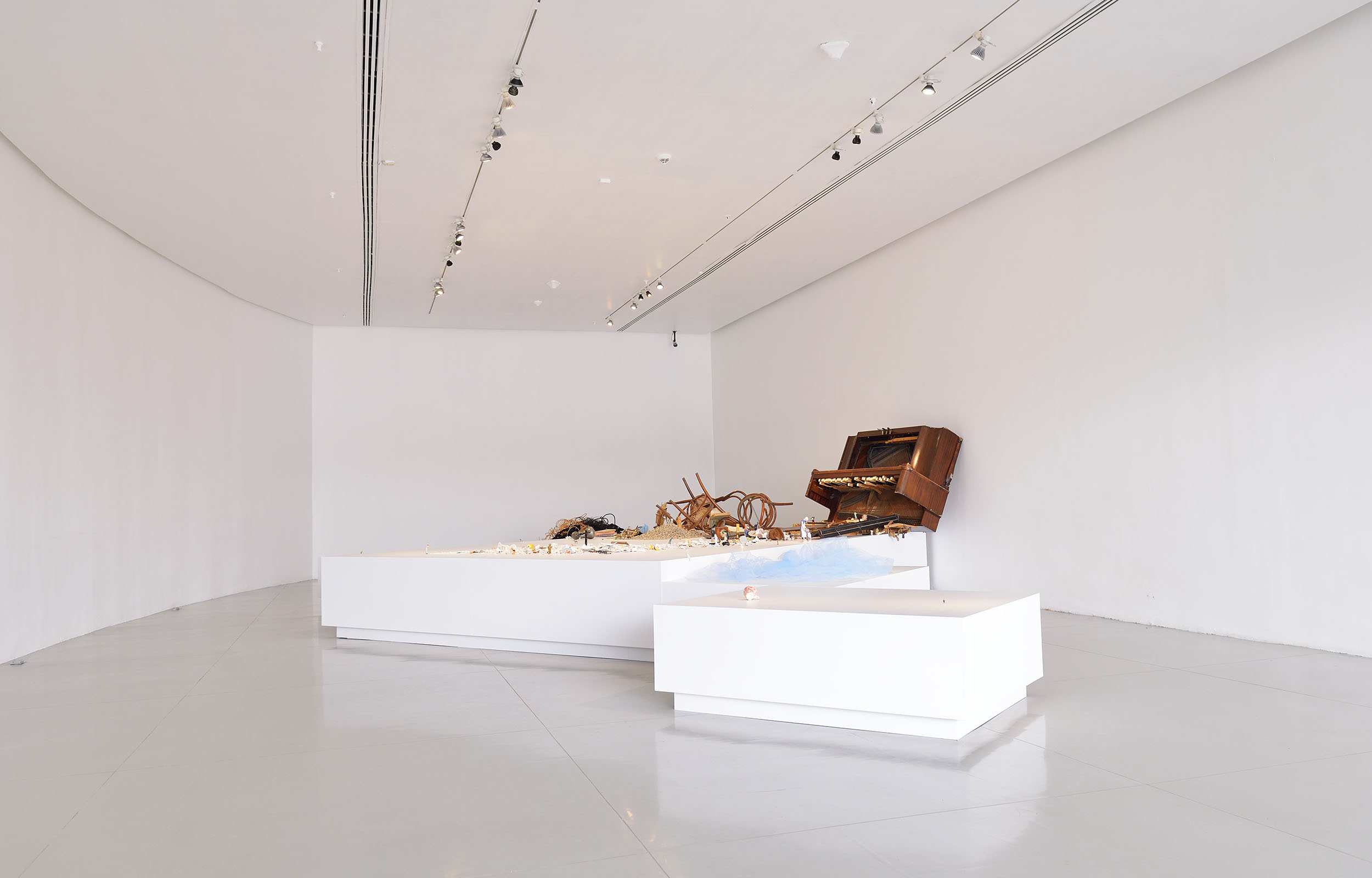
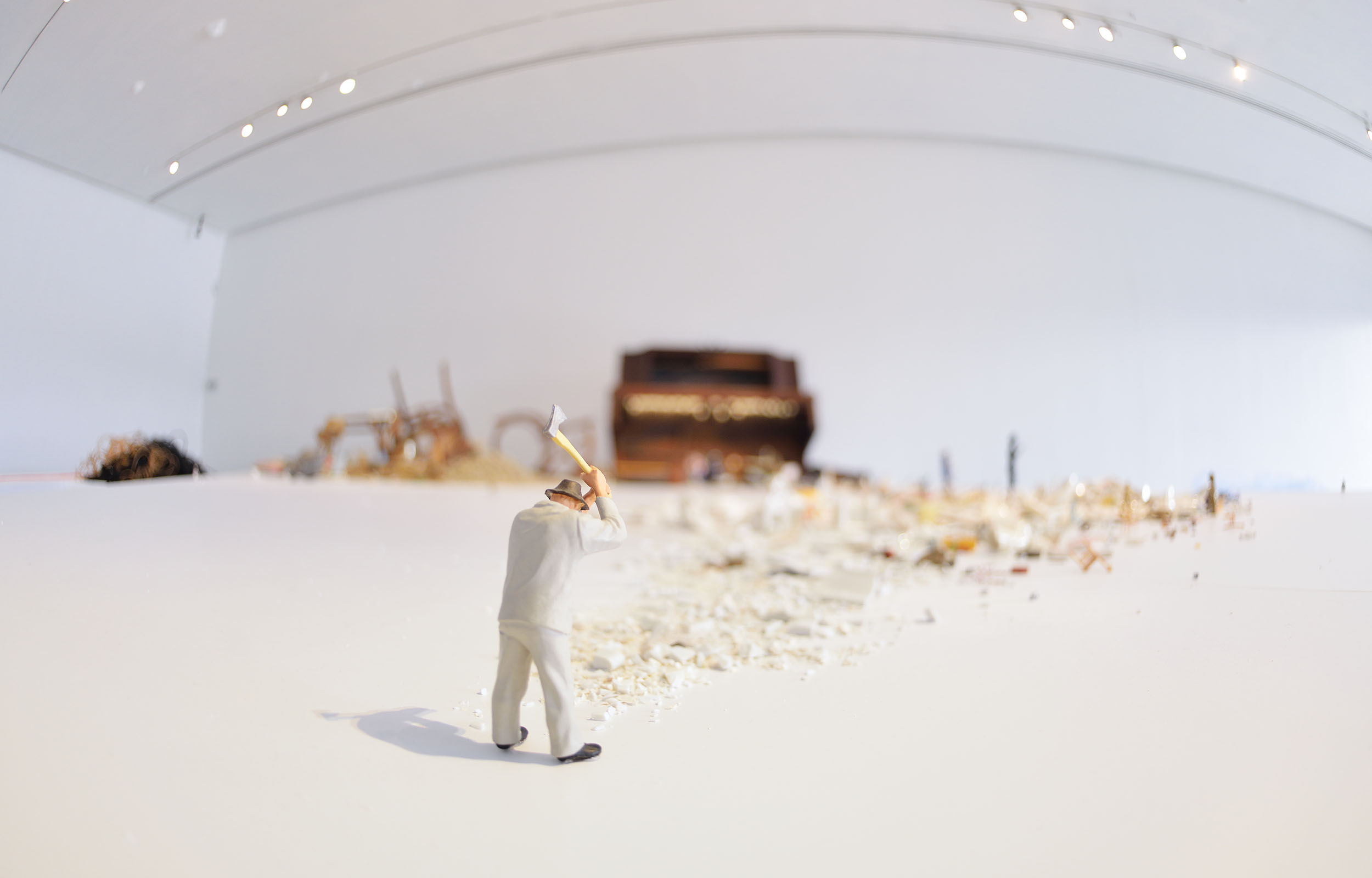
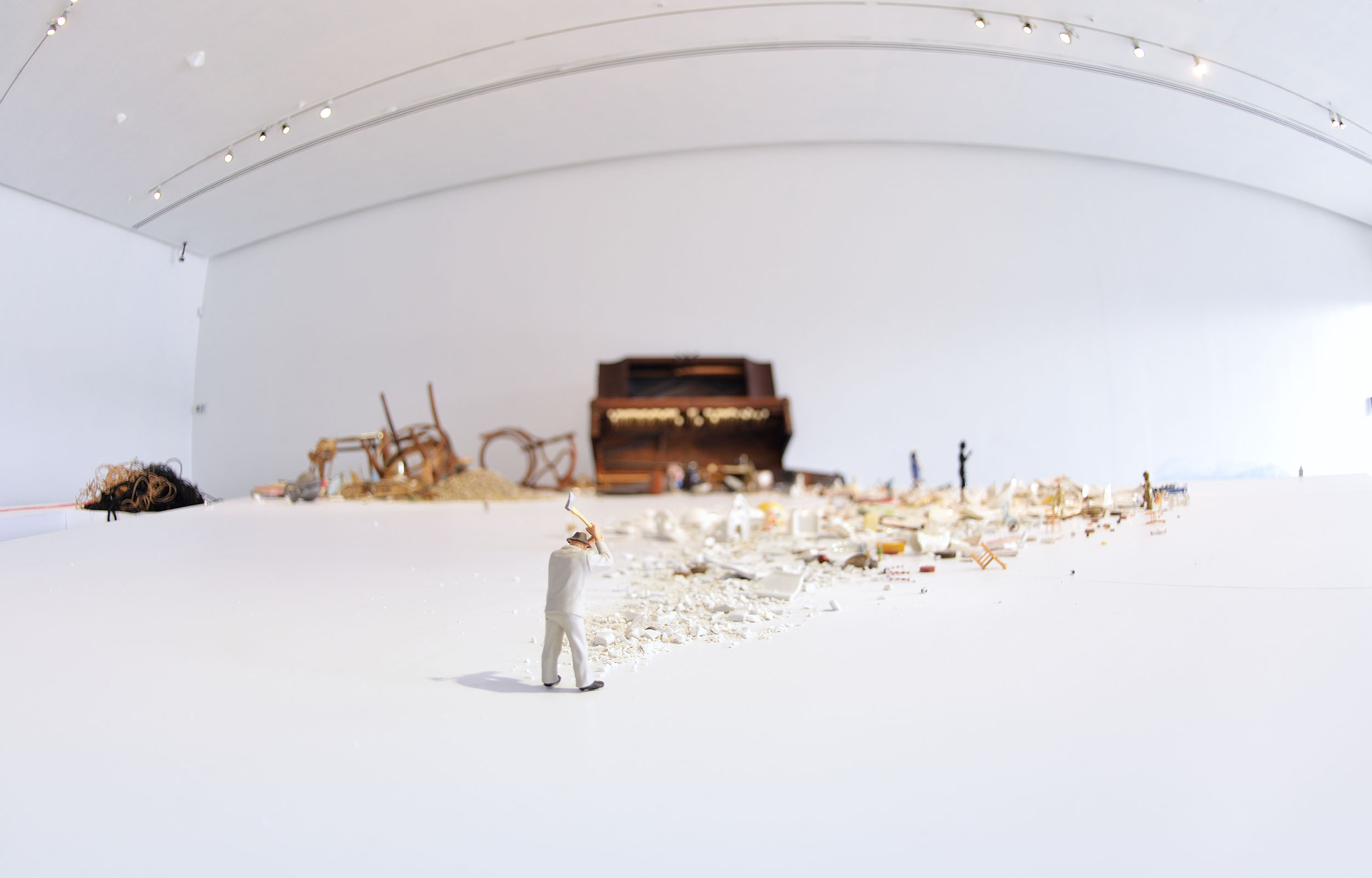



















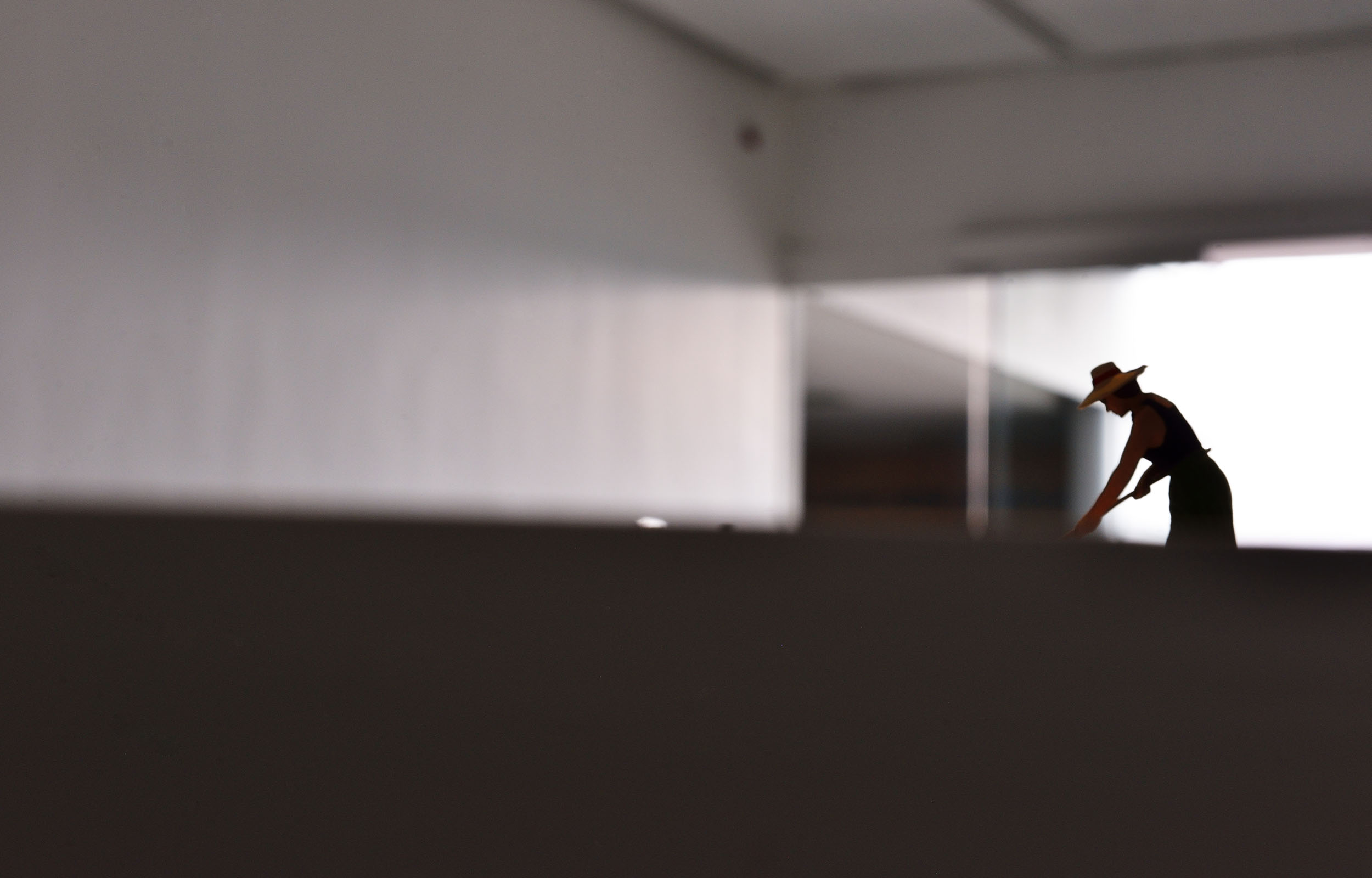


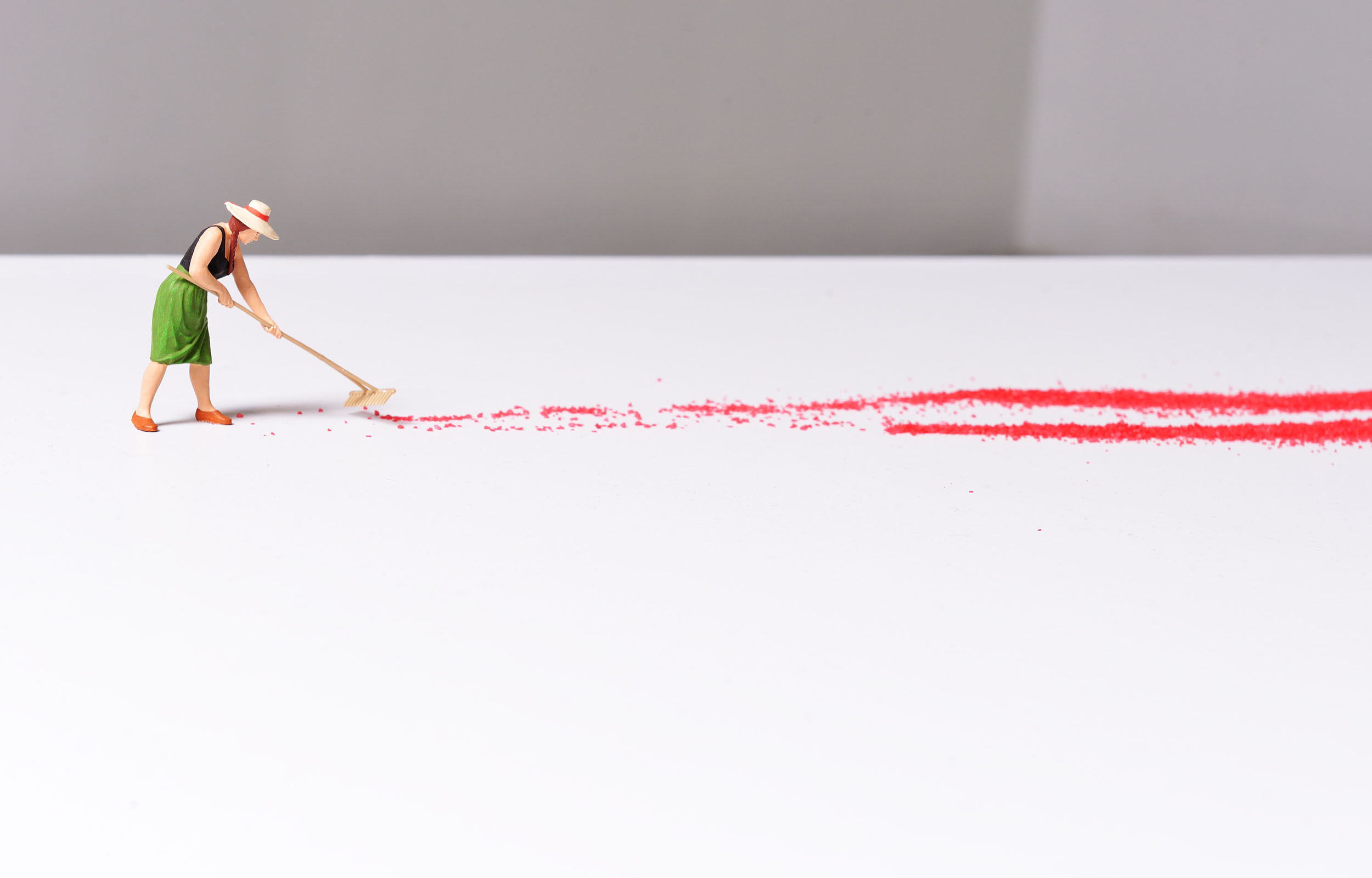


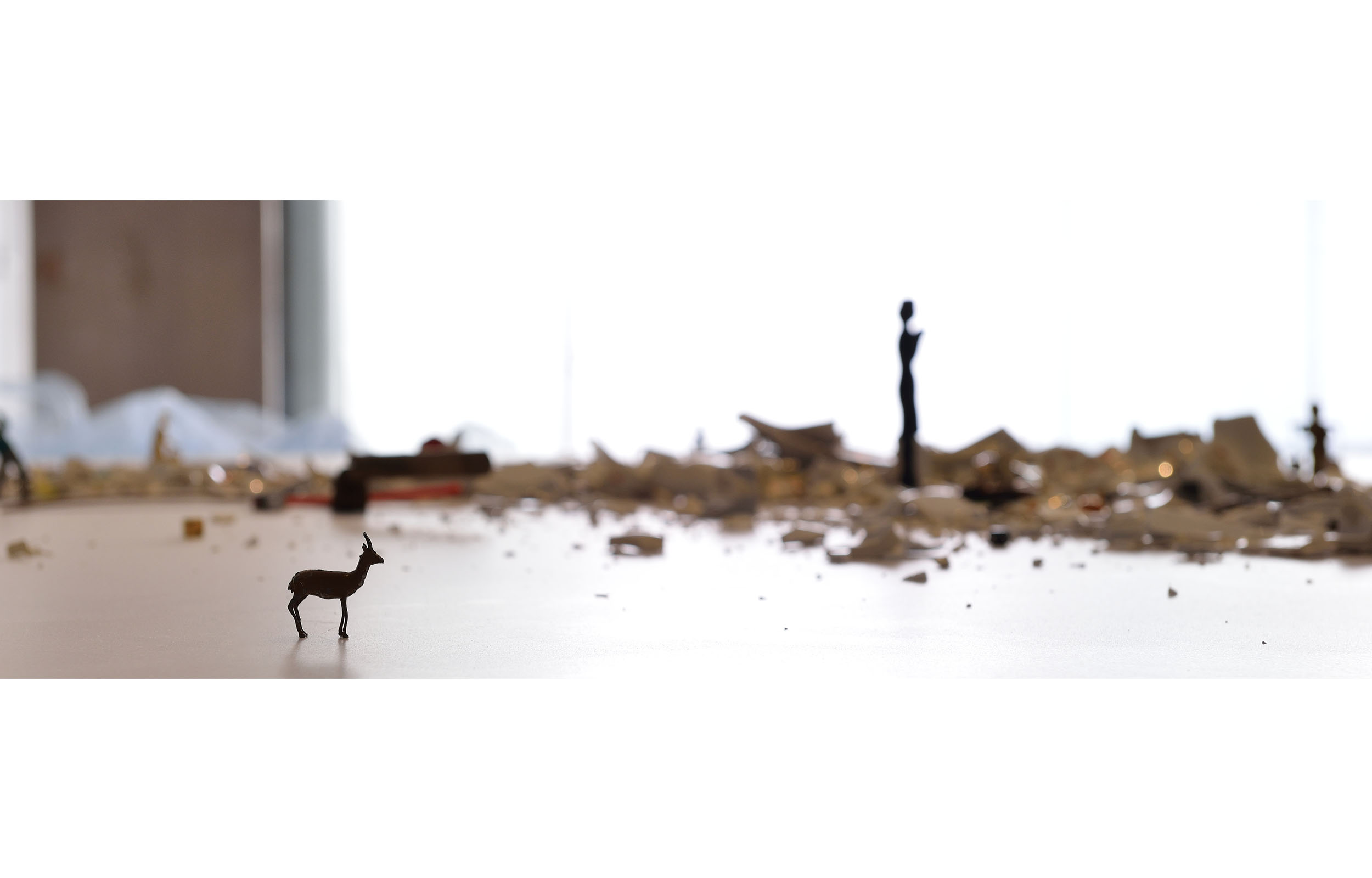


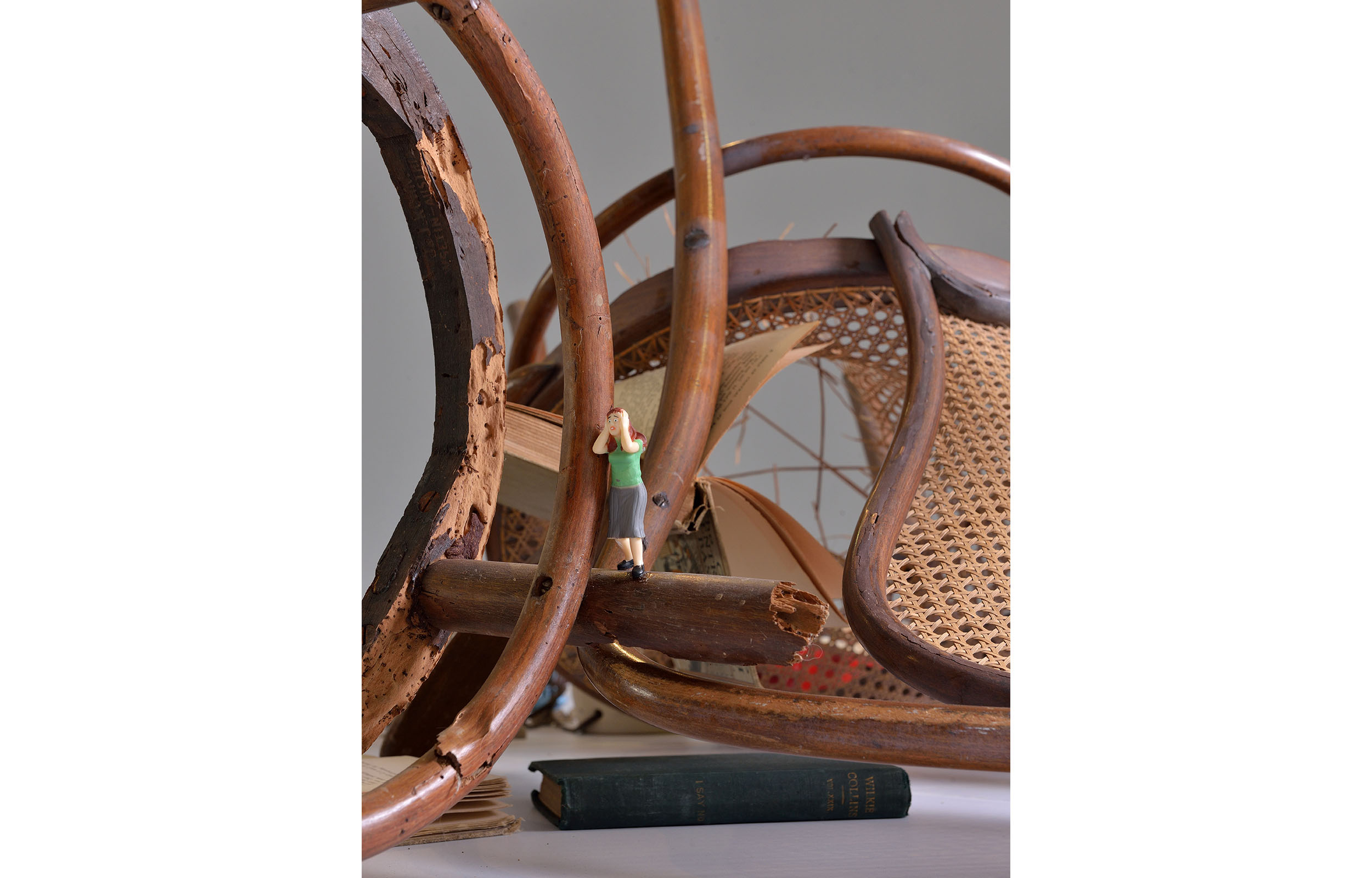
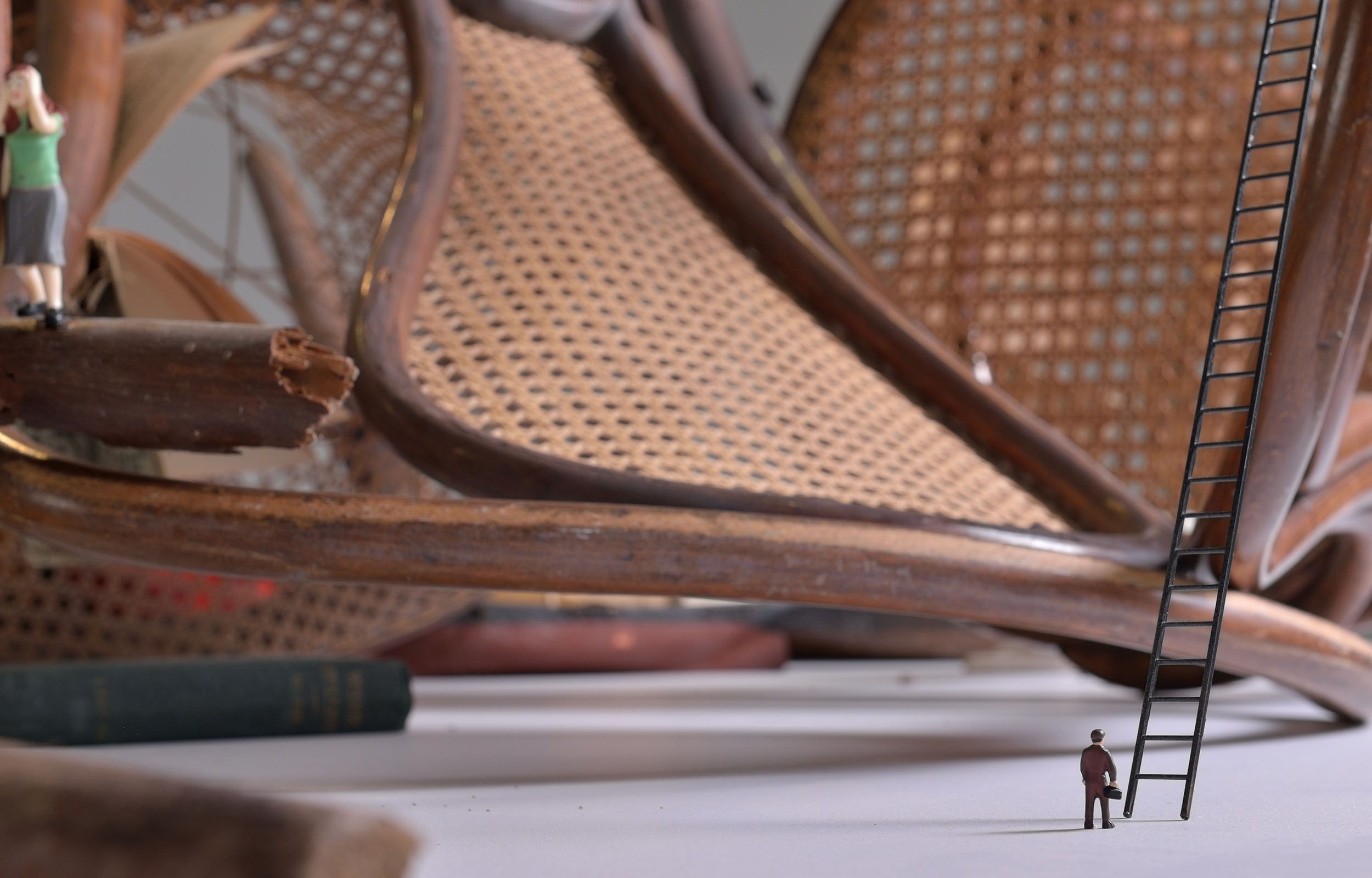
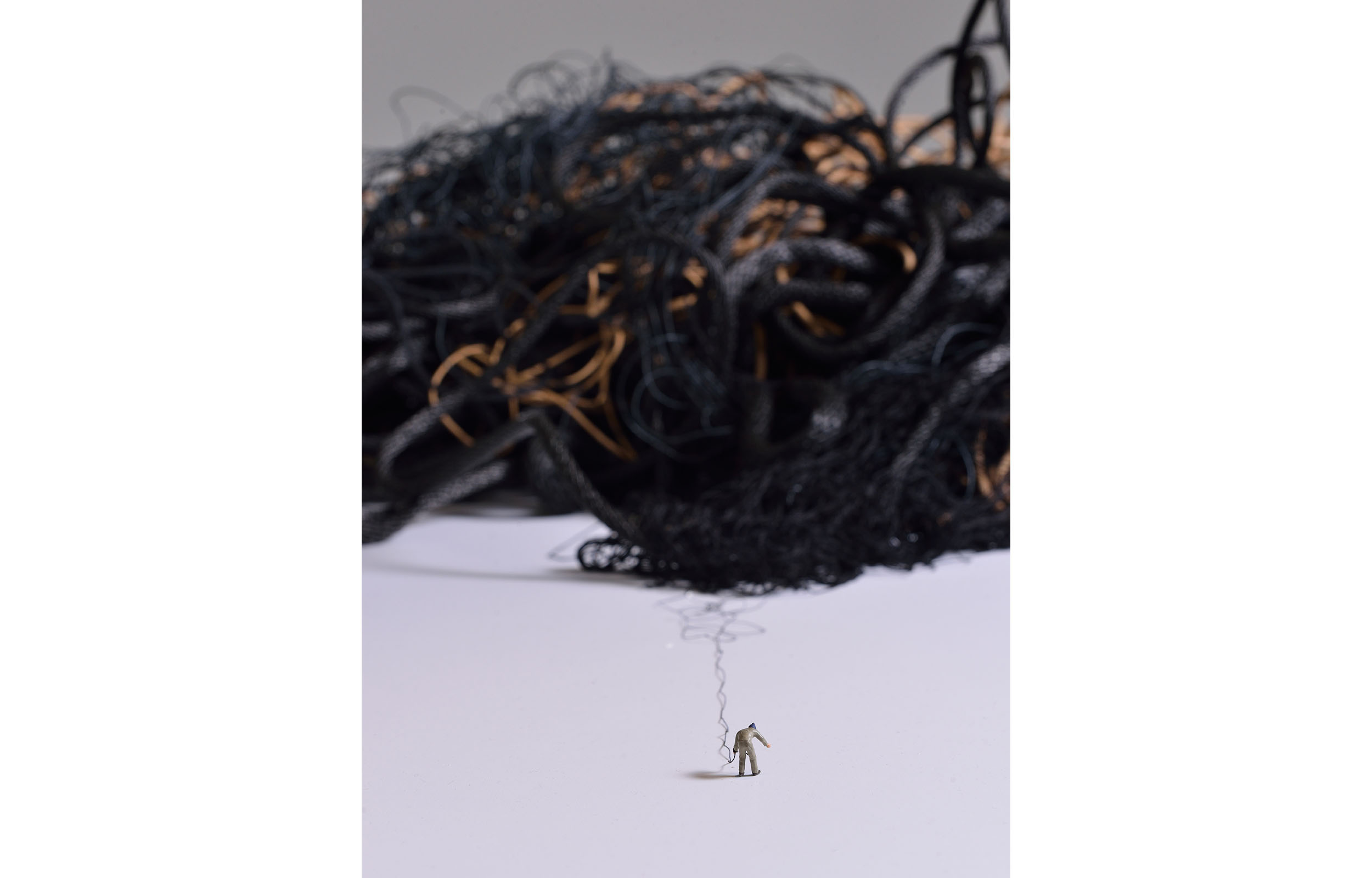
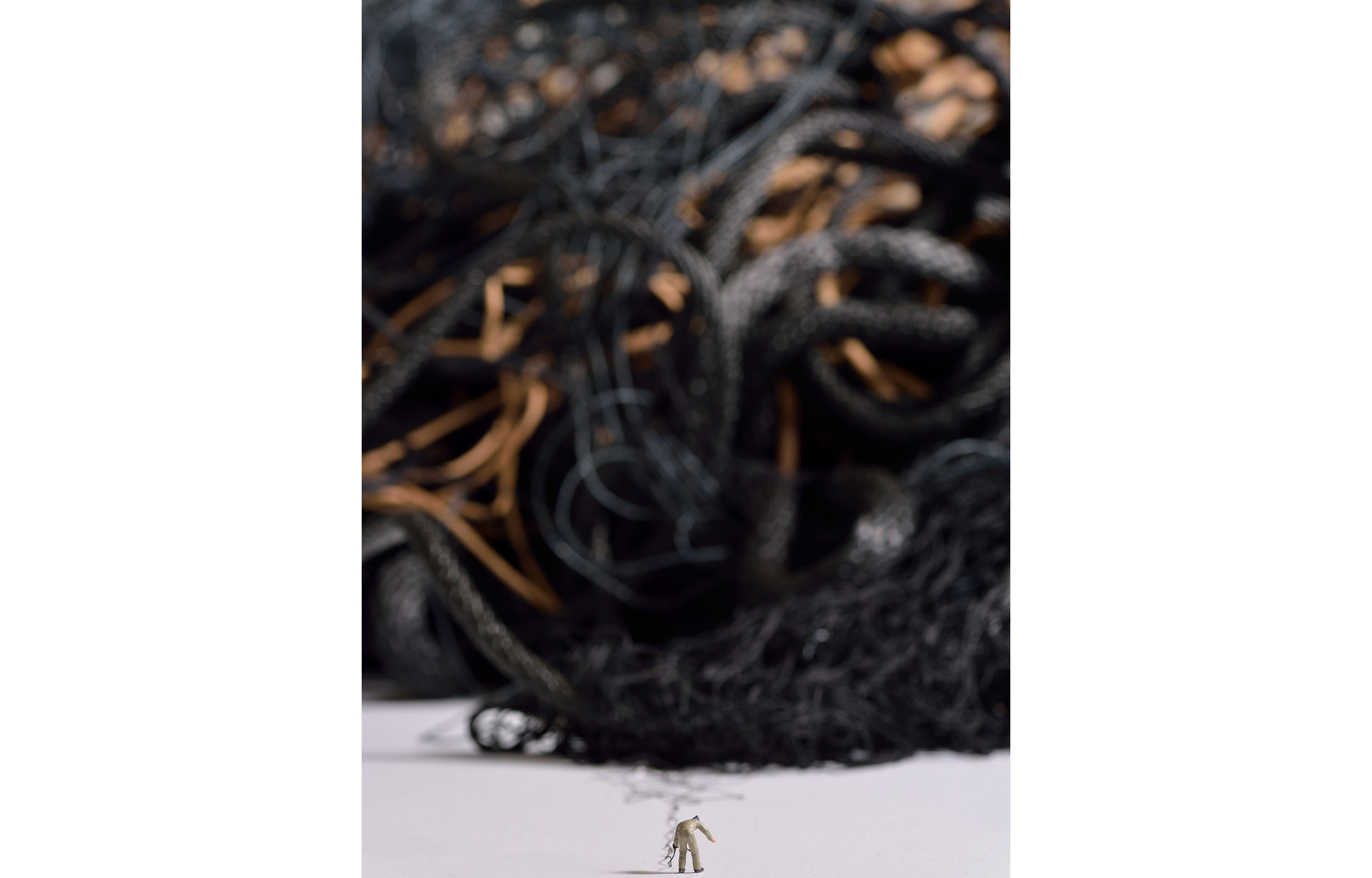
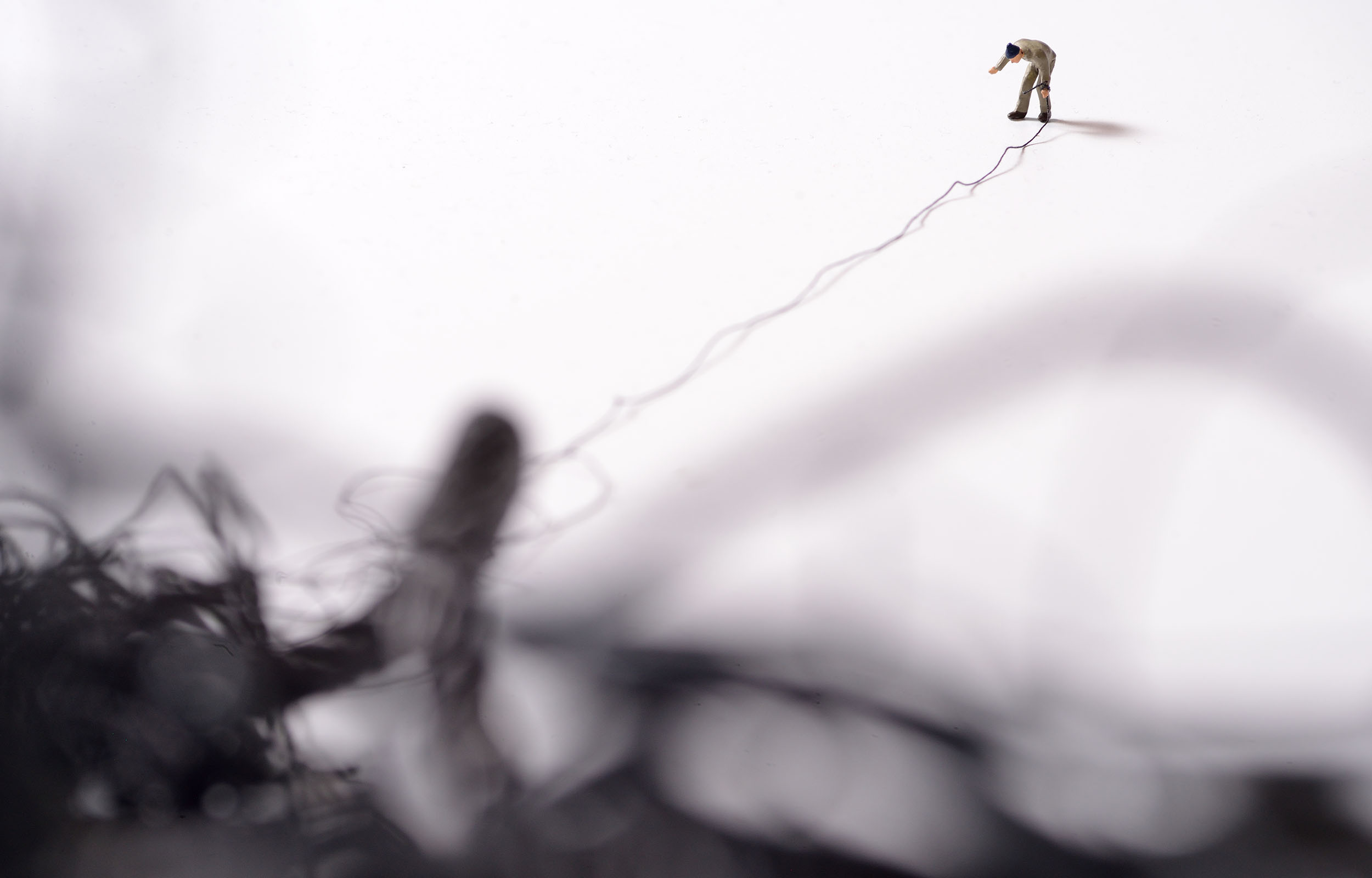

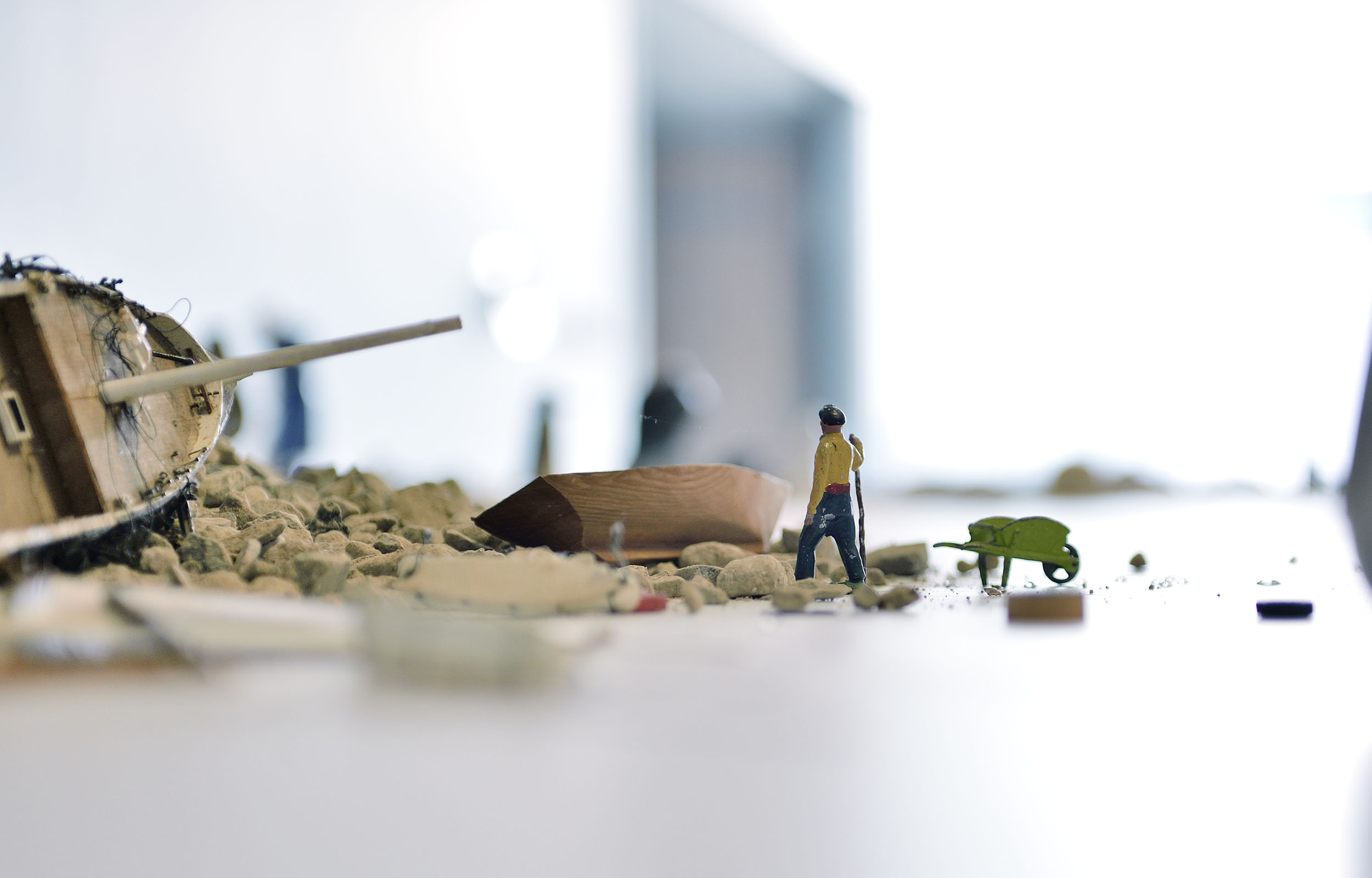
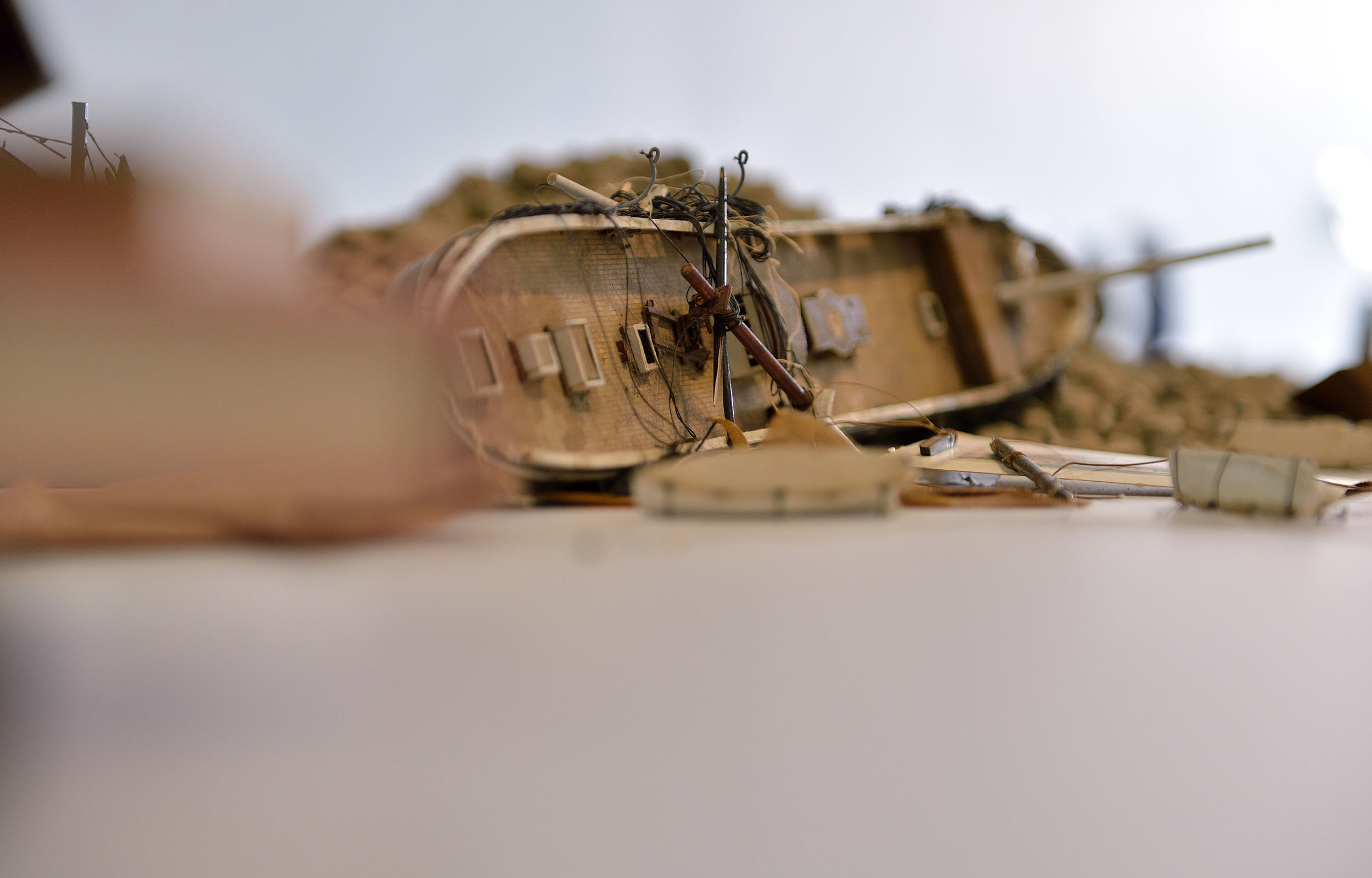

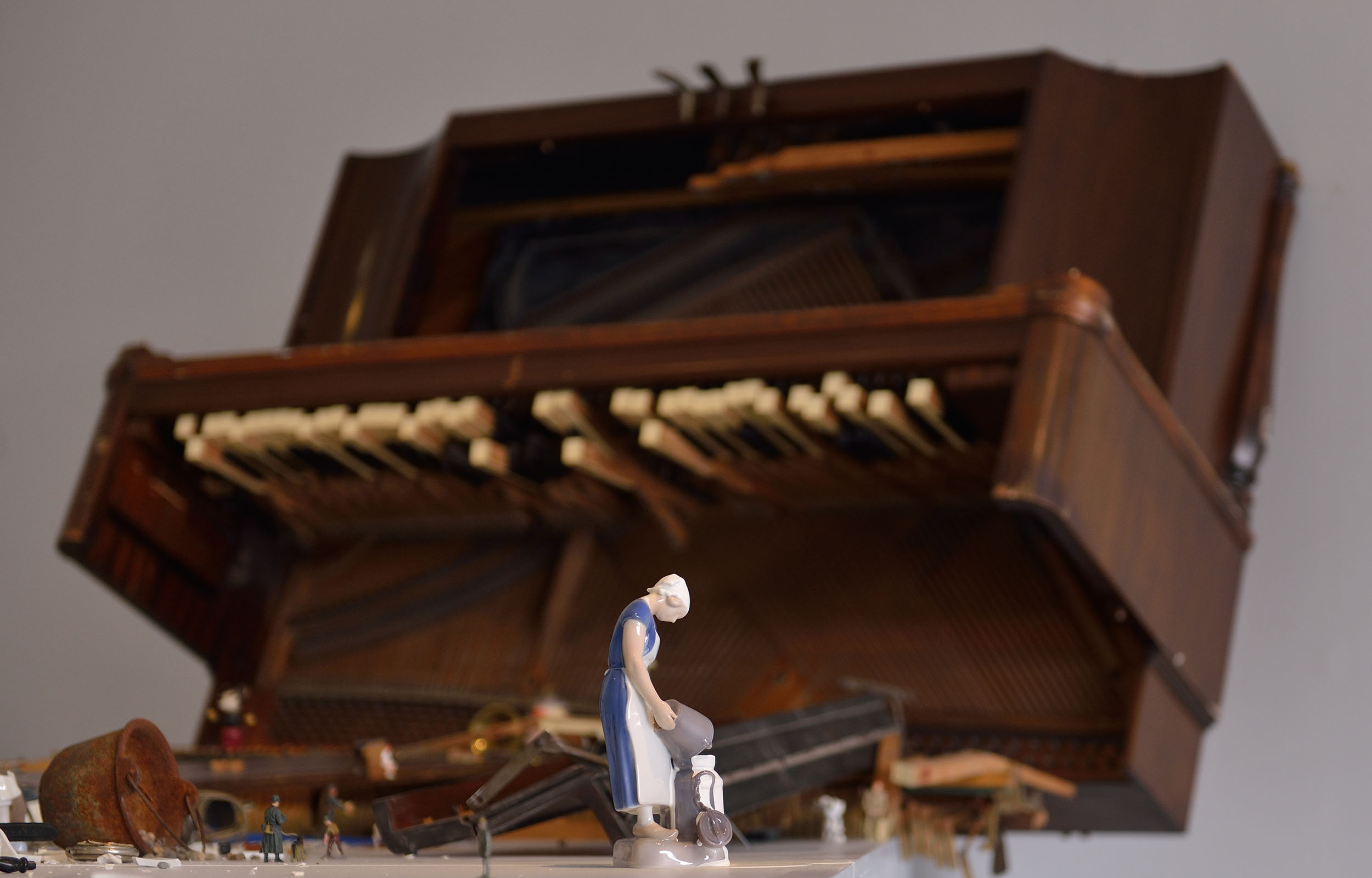
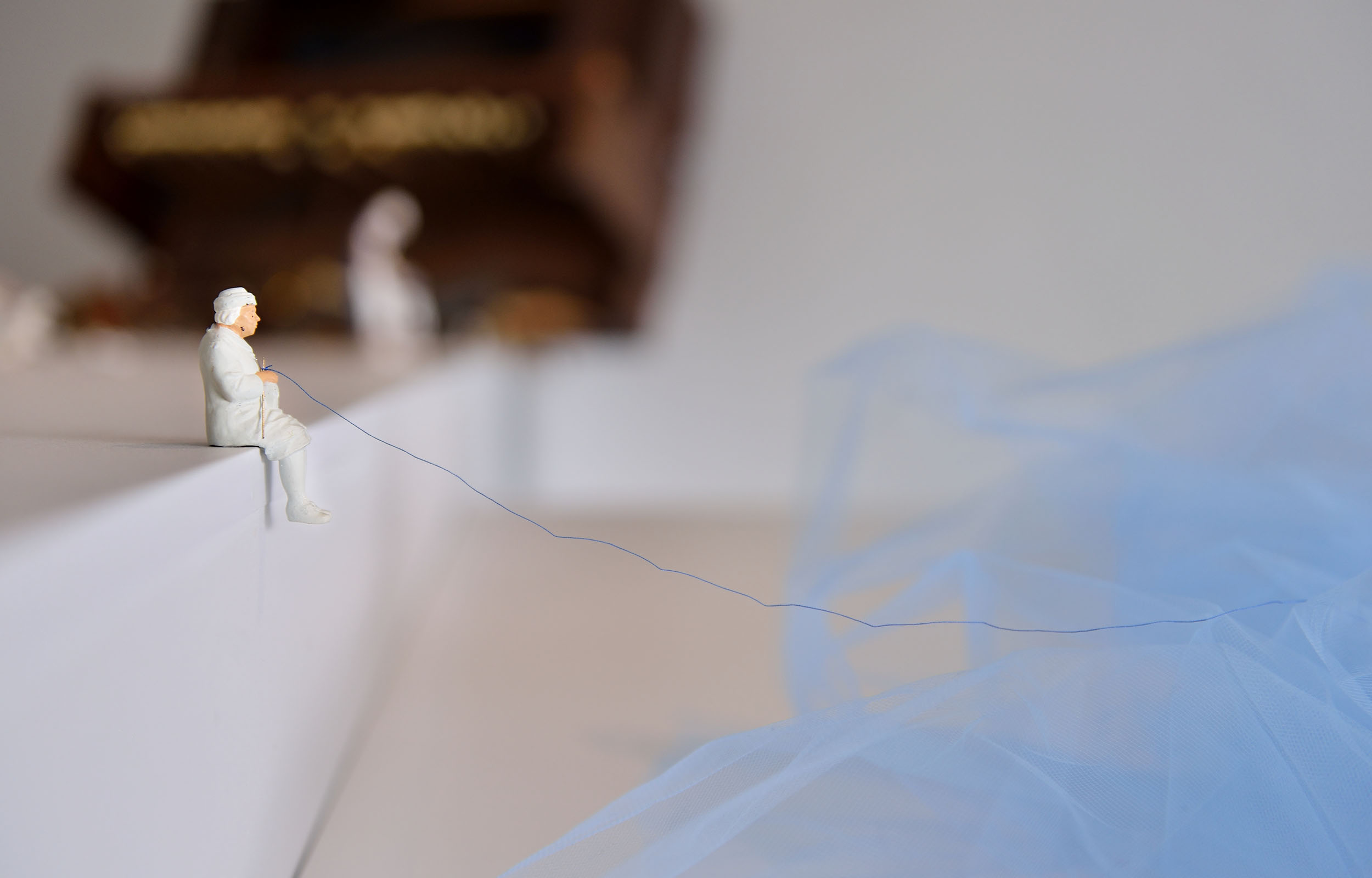


Man with Ax and Other Brief Situations | Liliana Porter
From November 28, 2014, to March 1, 2015
With her bizarre dialogues, her reconstructions, her forced labors, Liliana Porter has been making a mockery of the strict chronologies of history, almanacs, and timepieces for years now. But her account of time has become even more sinuous in Man with Ax and Other Brief Situations, her most ambitious installation to date, a unique retrospective of previous work, a poetical summing up, which at once calls on and destroys her microcosm, in the here and now of a finally large-scale space. Even a partial enumeration would require one to name one thing and then another, but what remains graven in the
memory is the whole, which the white platforms undertake to preserve complete, in order not to betray an unsettling beauty whose order cannot be grasped. How to describe it without forcing the freedom of the gaze to wander aimlessly amidst these pieces without rhyme or reason?
There at one end is the tiny man with the ax, a possible beginning, given the title of the installation, which confers a paradoxical centrality on this figure barely five centimeters tall. Busy tearing to shreds whatever he encounters on his path, one might say that that is the final end: the shreds of everything laid
out thereafter. But perhaps time moves the other way and what we see are the remains of his arduous but finally unsuccessful enterprise of devastation. There are also the brief scenes that strike one’s gaze –the “situations” of the title?–, which seem to isolate themselves for a moment from the chaos, islands of other times that temper the disquiet with the beginnings of a story. The banality and prosaic quality of the figures render them unfit –and for that very reason unexpectedly suitable– for metaphysical contraband, applied phenomenology.
For why should the man with the ax wish to shatter all the bric-à-brac Porter has so patiently accumulated over the years? If what he confronts with his ax is the past, then what is he destroying? Does he think, like Funes the Memorious, that his memory is a garbage heap? Does he want to put forgetfulness to work on it? Or is it Porter herself who destroys? In fact, things are more complicated and set the senses aflutter. In order for the man with the ax to destroy, Porter, in the opposite direction of time, has to reconstruct, putting together the fragments piece by piece. Her time is more flexible and uncertain, a time in which it is possible to destroy and compose at the same time, to choose one alternative without rejecting the others, to light up a man with an ax but also a gardener watering his plants in the midst of disaster. It is the ambiguous time of art, which resembles that of hope and that of oblivion. In the end, as in Magritte’s painting, Porter may well say that this is not a man with an ax.

